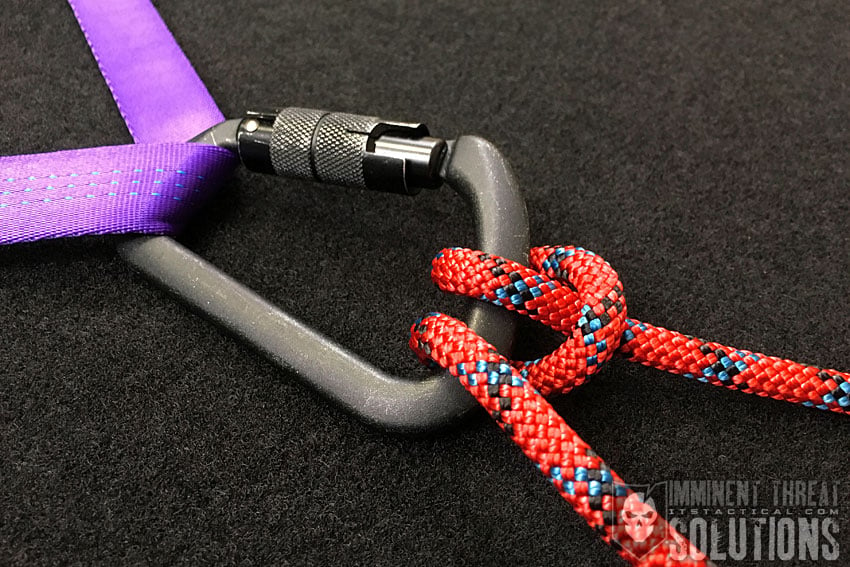
On today’s Knot of the Week I’ll be covering the Munter Hitch, which is mainly used as a friction device for controlling descents in a belay system, but can also be used for lowering a load under control or preventing a fall.
A Munter Hitch is a primary knot to know within the spectrum of climbing knots and can facilitate belaying with nothing more than a good pear shaped carabiner and a climbing harness. One of the biggest benefits of the Munter is its reversibility, meaning that it can be pulled from either side and still work just as efficiently.
It’s also great as dissipating heat better than traditional belay devices, due to the minimal time that the rope comes in contact with itself. There’s also disadvantages, which come from the Munter placing more friction on the outer sheath and the propensity for introducing twists to the rope.
Munter Hitch » Climbing Knots
(Strength: 4/Secure: 3/Stability: 4/Difficulty: 2) See below for what these ratings mean.
Ratings
Strength/Security/Stability/Difficulty
Each knot will be assigned a rating from 1-5 (1 representing the lowest score) based on the following four properties:
Strength – All knots will weaken the strength of a rope, however, there are knots that are stronger than others. The scale here will reflect how strong the rope remains with the specified knot.
Security – The security scale refers to how well the knot will stay tied, and resist coming loose under a normal load.
Stability – Stability refers to how easily the knot will come untied under an abnormal load (i.e. the knot being pulled in a direction it was not intended to) A lower score here represents instability.
Difficulty – The lower the number, the easier a knot is to tie.